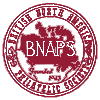The Goebel Press Era of Canadian Stamps
Ken Sargent with Leopold Beaudet
Page 1 - History | Timing | Stamp printing contract | Goebel
press configuration
Page 2 - Manufacturing the cylinders
Page 3 - Producing the stamps
Page 4 - The early months | Later production
Page 5 - People behind the Goebel press | Spoilage & production
approval | Afterthoughts | Acknowledgements | References
People behind the Goebel press and its stamps
While I headed up the Goebel project, assisted by Elwood Girling who dealt with all the mechanical aspects in designing the press, it was the designers, engravers, siderographers, and plate printers who were responsible for making the Goebel press a success at BABN.
George Gundersen was a highly talented individual, a top-notch engraver who took a businesslike approach to his work. Engraving to a deadline did not bother George. He had left BABN to work at the Bureau of Engraving and Printing in Washington, but returned in the early 1950s to become our Art Director and Chief Engraver.
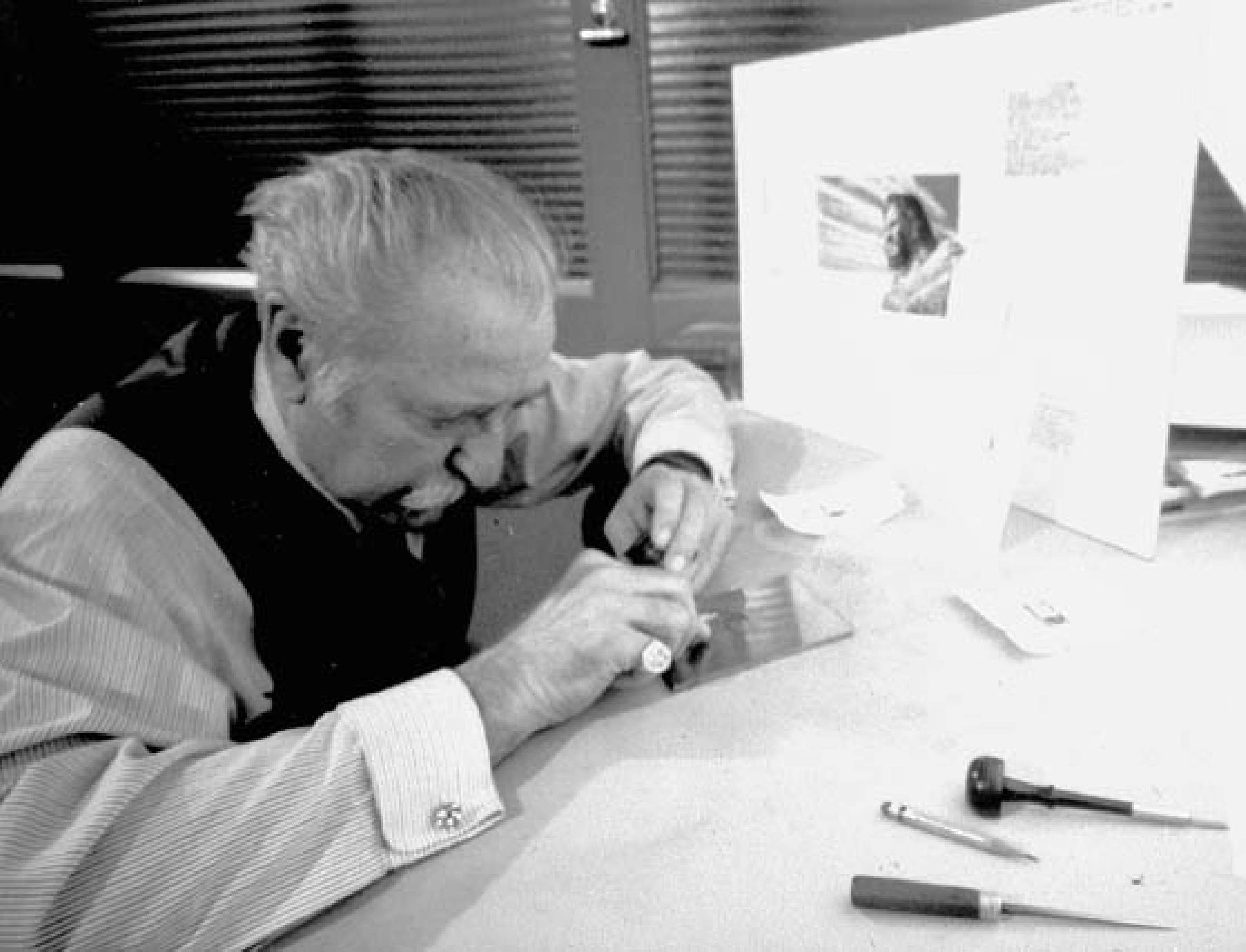
George Gundersen engraves the 1970 6¢ Kelsey commemorative. [Source: Library and Archives
Canada, s003558]
BABN hired Keith Smith directly from the Ontario College of Art in Toronto. He became a skilled engraver, and had management skills too. He became Art Director when George Gundersen retired.
George Fanais was a quiet man and an exceptionally talented artist and a designer. His first connection with BABN was as a freelancer, but he was persuaded to join our Engraving and Design department. The 8 to 4 routine wasn’t easy for George, but he adjusted to it. His skill was to be able to take a drawing or sketch and convert it to the black and white tones for the engraver to do his work.
Gordon Yorke engraved several stamps for the Goebel press, notably the 1975 8¢ multi-colour Coastal Ships se-tenant quartet. Like George Gundersen and Keith Smith, he studied at the Ontario College of Art. He joined BABN in 1935, and trained under Harry P. Dawson.
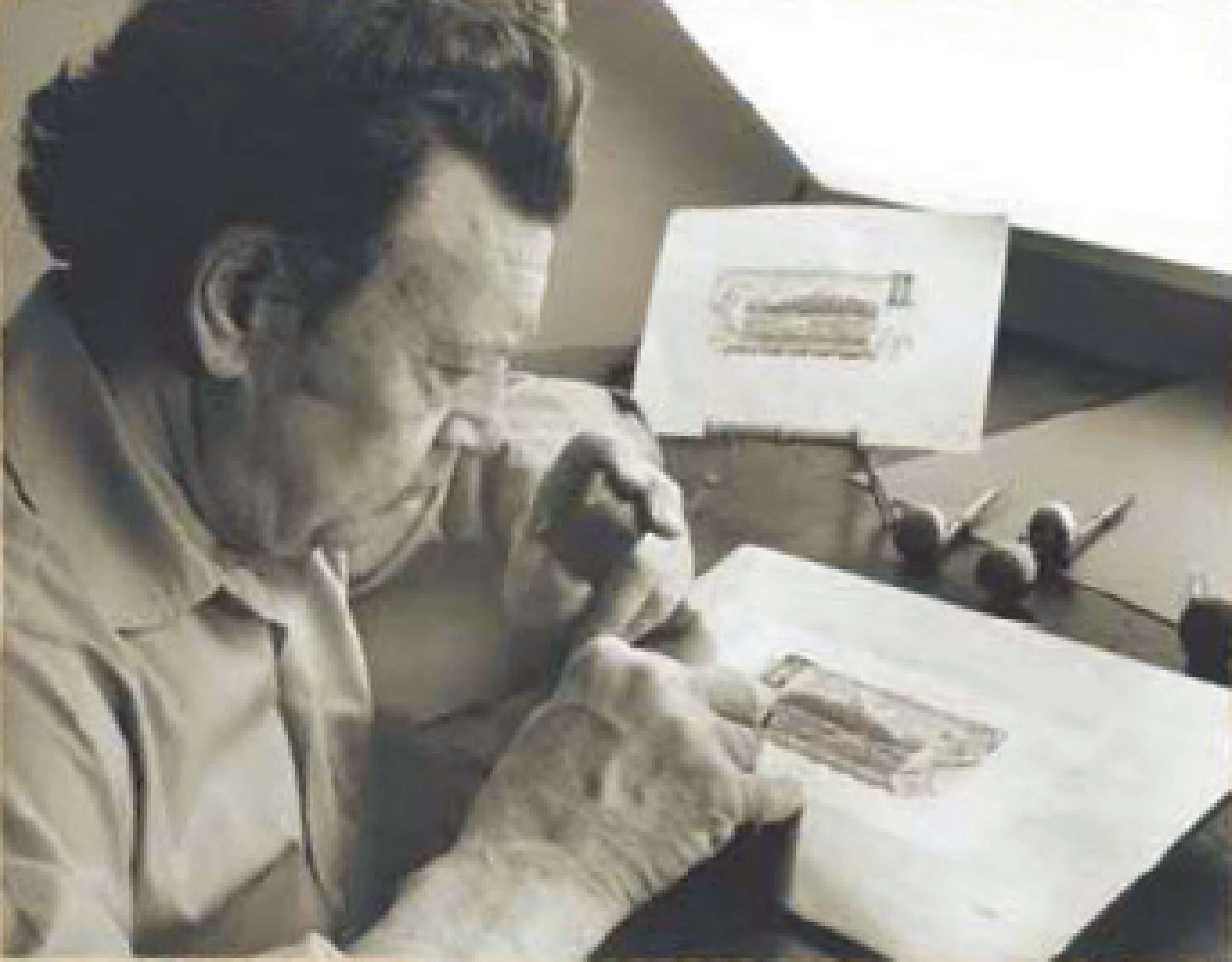
Gordon Yorke engraves a banknote. [Source: The Art and Design of Canadian
Bank Notes]
Robert Couture did a lot of jewelry engraving before joining BABN. For most of his career, he was a lettering and script engraver. Bob loved his craft, and I would bring visitors to him for a good description of the process. After George Gundersen retired and Keith Smith and Gordon Yorke died, Robert stepped up and did some vignette engraving. He engraved several stamps printed on the Goebel press including the 1977 12¢ Joseph-Elzéar Bernier and Sir Sandford Fleming se-tenant pair, the four 1978 CAPEX stamps, and the views of the Parliamentary buildings that graced several booklet panes including the last one from the Goebel press.
In the early 1980s, an Ottawa designer and engraver, Gregory Prosser, joined BABN as Art Director and played a role in engraving stamps printed on the Goebel press.
Vignette and letter engraving are two separate disciplines. Art Ponting was a letter engraver. However, he did the entire engraving for the 1974 8¢ World Cycling Championships commemorative, it being such a simple design.

Art Ponting engraves the 1974 8¢ Cycling commemorative.
[Source: More Than Just a Pretty Face]
Murdo Stewart (Photo page 2) and Tony St. Denis (Photo page 2) were siderographers. They operated the Rotary Transfer Machine to produce the intaglio cylinders. Graham Martin did the camera work and Stirling McElerhan made the gravure cylinders. George Cody and Kenny Peterson did the chromium plating. Duncan Beardsley supervised all the examining and finishing of stamps as well as the Booklet Machine. Chemist Geoff Wright made sure the inks were perfect for the job.
It is important to note that the printers and other craftsmen at BABN were up to the task of operating and servicing the Goebel press and contributed immensely to the successful fulfillment of the postage contract. Among the plate printers were Keith Atkinson, Donnie Armstrong, and Eddie Major (Photo page 3), all now deceased. Keith Atkinson and Donnie Armstrong were the first two trained on the press.
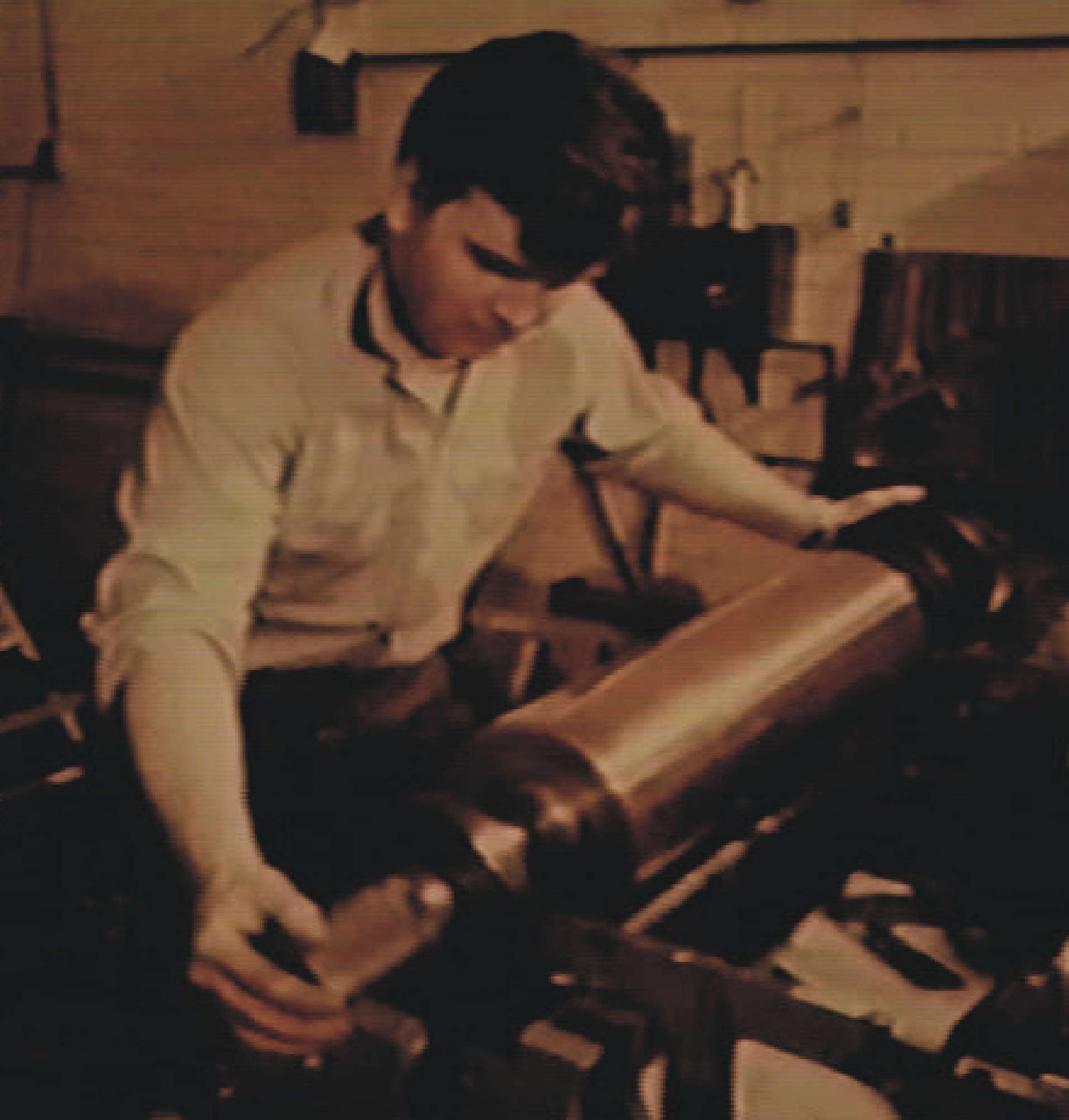
Stirling McElerhan prepares one of the gravure cylinders for the 1970 6¢ Kelsey
commemorative.
[Source: Something Canadian]
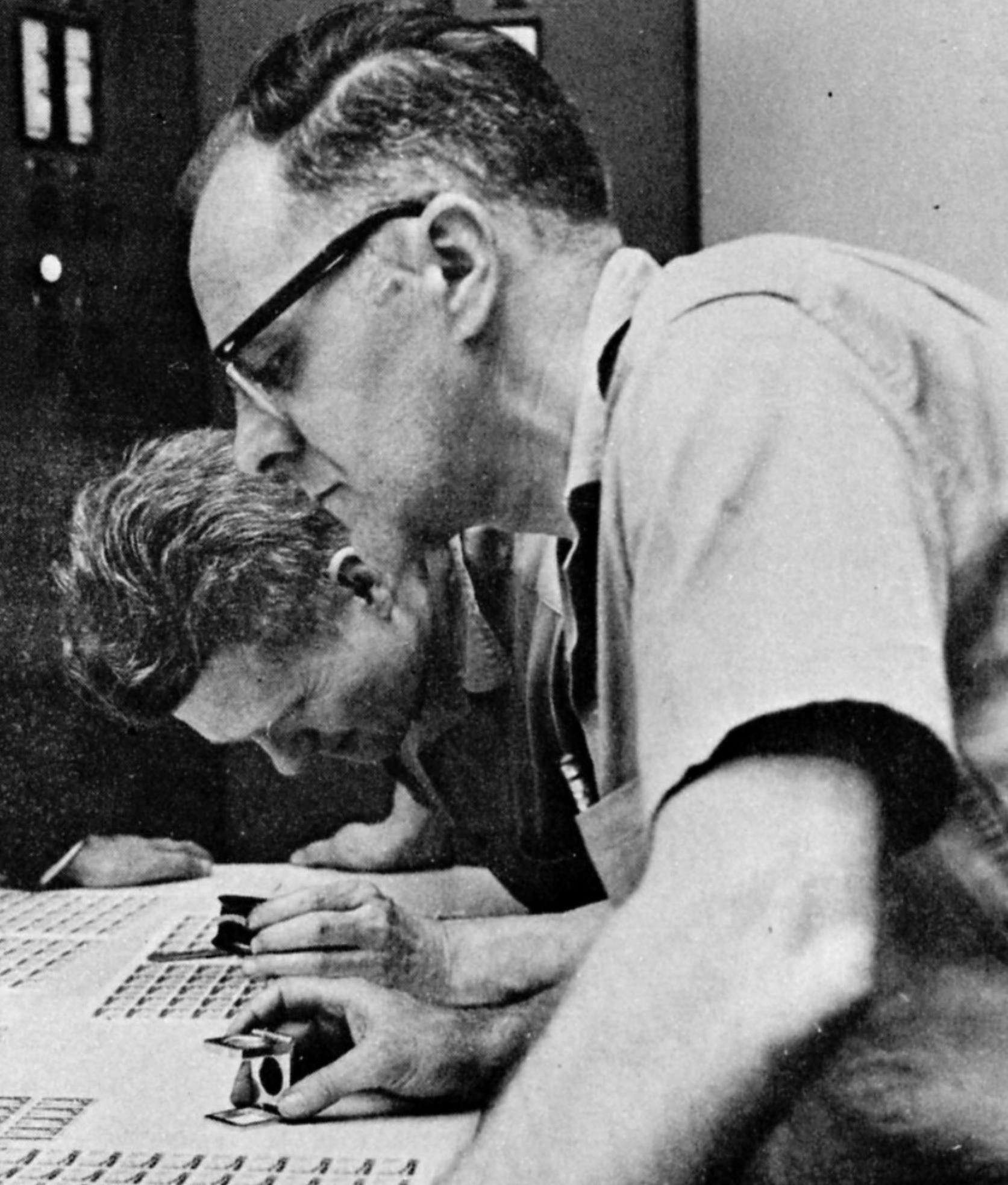
Keith Atkinson (foreground) and Donnie Armstrong examine the 1968 5¢ Nonsuch commemorative
just off the press.
[Source: The Postmark]
A word about spoilage and production approval
One can imagine that in starting up print trials on a complex web-fed machine there would be much spoilage of off-register prints before all units are in perfect register. This is much more complex than sheet production where exact counts can be made of all spoilage. The solution was a large collector basket for all waste as it came off, which would be burned under double custody in a nearby incinerator. Very few “misprints” of stamps from the Goebel press ever appeared.
With such a complex press structure, production approvals were required on a timely basis, much more so than on a sheet-fed press. Canada Post officials were very co-operative in this regard to minimize downtime and spoilage.
I recall one occasion with the large 1973 8¢ silver and 15¢ gold Queen’s Visit issue driving with George Gundersen to the summer cottage of Frank Flatters, a Post Office employee, on a weekend to get the approval to proceed to print those stamps. This issue was intended and designed for two large size commemoratives se-tenant with the portrait on one and the script lettering on the other. At the last minute, after both were engraved, the design was changed to two double-large stamps of two denominations. The new larger designs were a collaboration of George Gundersen, who engraved the Queen portrait, and the original designer, Allan Fleming, a noted Toronto graphic consultant.
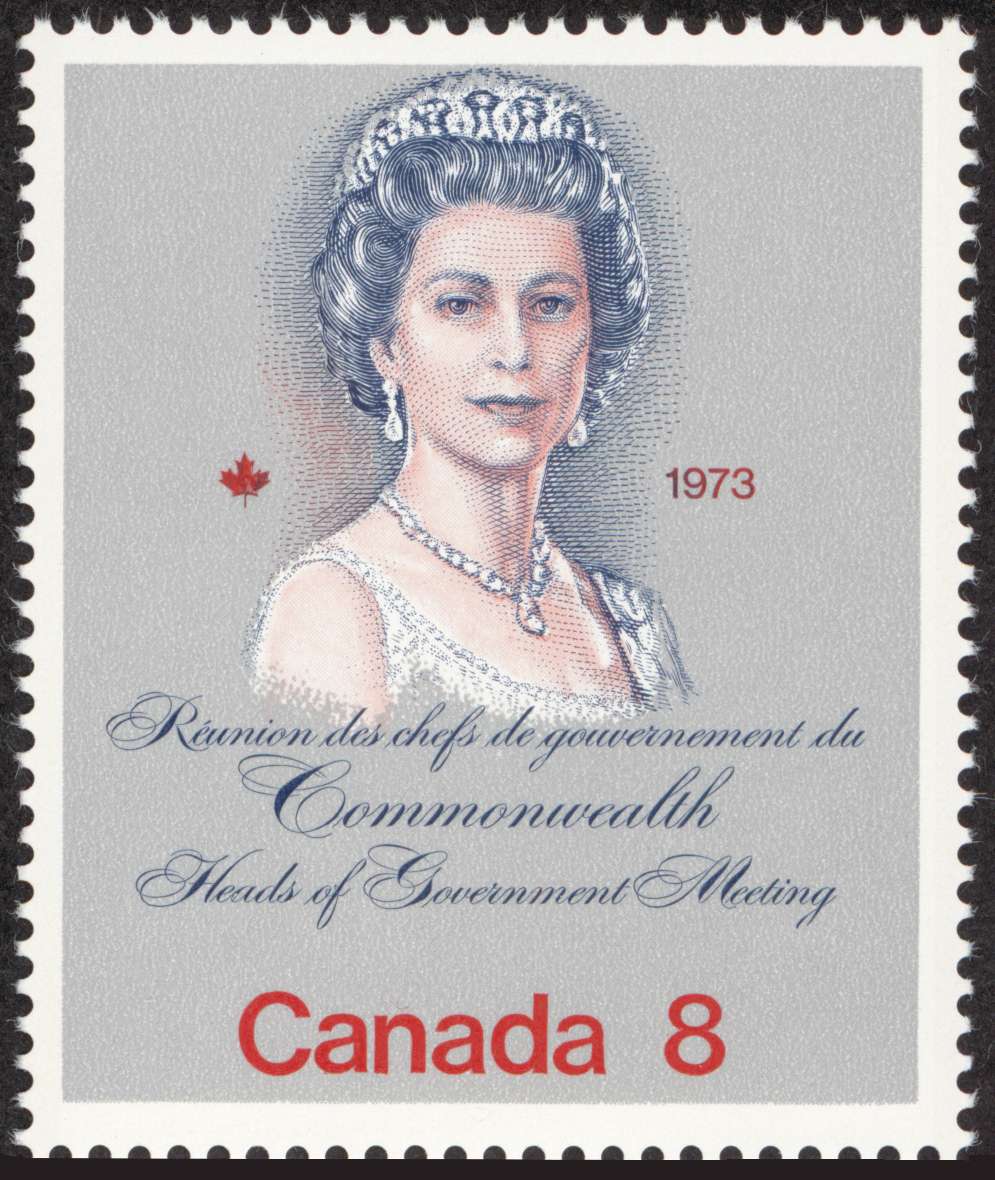
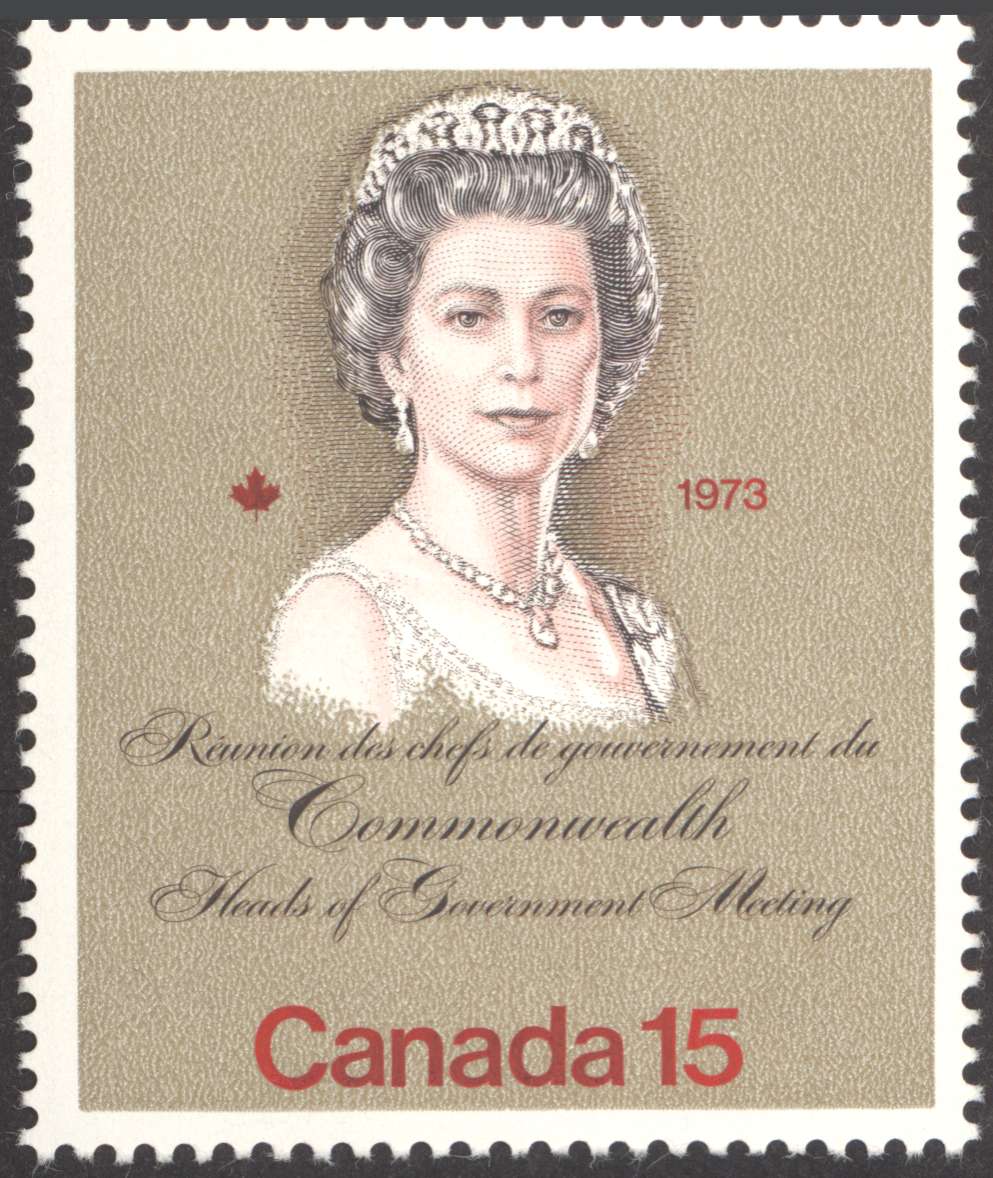
1973 8¢ and 15¢ Royal Visit commemoratives – two-colour gravure plus tagging and two-colour intaglio.
Engraved by George Gundersen.
A few afterthoughts
Soon after our Goebel start-up, Pierre Trudeau appointed Eric Kierans Postmaster General. Kierans called for a full study of Canadian stamps and appointed a blue-ribbon committee of Canadian artists and graphic designers. They recommended a new Stamp Advisory Committee, and this would be the beginning of a major change in the printing of Canadian stamps, from the traditional steel engraving issues to predominantly lithographed stamps.
They liked the instant proofing of a litho issue rather than the several weeks delay to see the results of engraving a portrait. Inevitably, engraving would be reduced to lettering and objects, and then disappear from both definitives and commemoratives. The Goebel press would become redundant.
At one point, Canada Post needed a commercial litho printer, and Ashton-Potter of Toronto was chosen. I was asked to meet with them to give advice on stamp production, and reluctantly agreed. They opened the meeting stating they needed no advice from us on litho printing (which was true), and only wanted to discuss perforation and examining of stamps. By doing this, we brought a third supplier into the field of Canadian stamps. My feeling was that, with the majority views of the Stamp Advisory Committee, this would be inevitable and I accepted that.
I recall that George Gundersen predicted our traditional engraved designs of Canadian stamps would be reduced to “litho labels”, and he was right.
In 1984, BABN became a wholly owned subsidiary of BCE Inc. As part of the sale of BCE PubliTech in 1988, the business was transferred to Quebecor Printing Inc. It was subsequently known as the BA Banknote Division of Quebecor Printing Inc. In 1999, BA Banknote was acquired by Munich-based German banknote printer Giesecke & Devrient, and now operates as BA International.
Goebel stopped making printing presses several years ago. They are now part of a Dutch firm specializing in slitters and rewinders.
The last I heard, the Goebel press had been purchased by Canadian Bank Note Co., and it was located in their Ogdensburg, NY, plant.
Most of the information in this article regarding the press is the result of memory only, with no access to files or to the press itself. I was able to consult two short videos by Canada Post that showed the Goebel press in operation, Something Canadian and More Than Just a Pretty Face.
The purpose of this article is to put on record as much information as possible on this particular era of Canada’s philatelic history. Soon no one will be alive who might tell this story.
Acknowledgements
I would like to thank Joel Weiner for providing the illustration of the “Baby Sisters” labels, Robin Harris for the reconstruction of the 1972 10¢ Landscape definitive plate proof, and Cimon Morin who helped with several illustrations. Thanks also to Ian Kimmerly for encouraging me to write this article. Finally, I would like to thank Leopold Beaudet who provided many suggestions and brought his editorial skills to bear.
References
- Bank of Canada, The Art and Design of Canadian Bank Notes.
- Canada Post Office, Something Canadian. Video describes the steps in the production of the 1970 6¢ Kelsey commemorative.
- Canada Post Office, More Than Just a Pretty Face, National Film Board, 1974. Video describes the lithographic, intaglio, and gravure printing processes.
- Elizabeth Carey, “’Nonsuch’ Makes History Again”, The Postmark, Sept. 1968, pp. 4-7. Describes the printing of the 5¢ Nonsuch commemorative.
- Swedish Post Office, A Stamp Is Made, 1985. Describes the processes used to produce Swedish stamps.
This article was originally published as a supplement to Corgi Times, Vol. 18, No. 4, Jan.-Feb. 2010. Corgi Times is the newsletter of The Elizabethan II Study Group of the British North America Philatelic Society.
The Elizabethan II Study Group website
Page 1 - History | Timing | Stamp printing contract | Goebel
press configuration
Page 2 - Manufacturing the cylinders
Page 3 - Producing the stamps
Page 4 - The early months | Later production
Page 5 - People behind the Goebel press | Spoilage & production
approval | Afterthoughts | Acknowledgements | References
About the author
Ken Sargent received a B. Sc. in Chemical Engineering from the University of Saskatchewan. In 1947, he came to BABN and began a 38-year career in the security printing industry. At the time of the Goebel press acquisition, he was Vice-President and General Manager. Ken was President of the Company for seven years prior to his retirement in 1985. He was a friend and supporter of the philatelic community as evidenced by a letter from Richard Malott on the occasion of his retirement.
Copyright © 2010 Ken Sargent and Leopold Beaudet
Web design copyright © 2013-2026 The British North America Philatelic Society.
The documents on this website are for informational and non-commercial or personal use only.
Documents on this website shall not be used on other websites or for commercial purposes without permission.
This page was last modified on 2025-04-25
